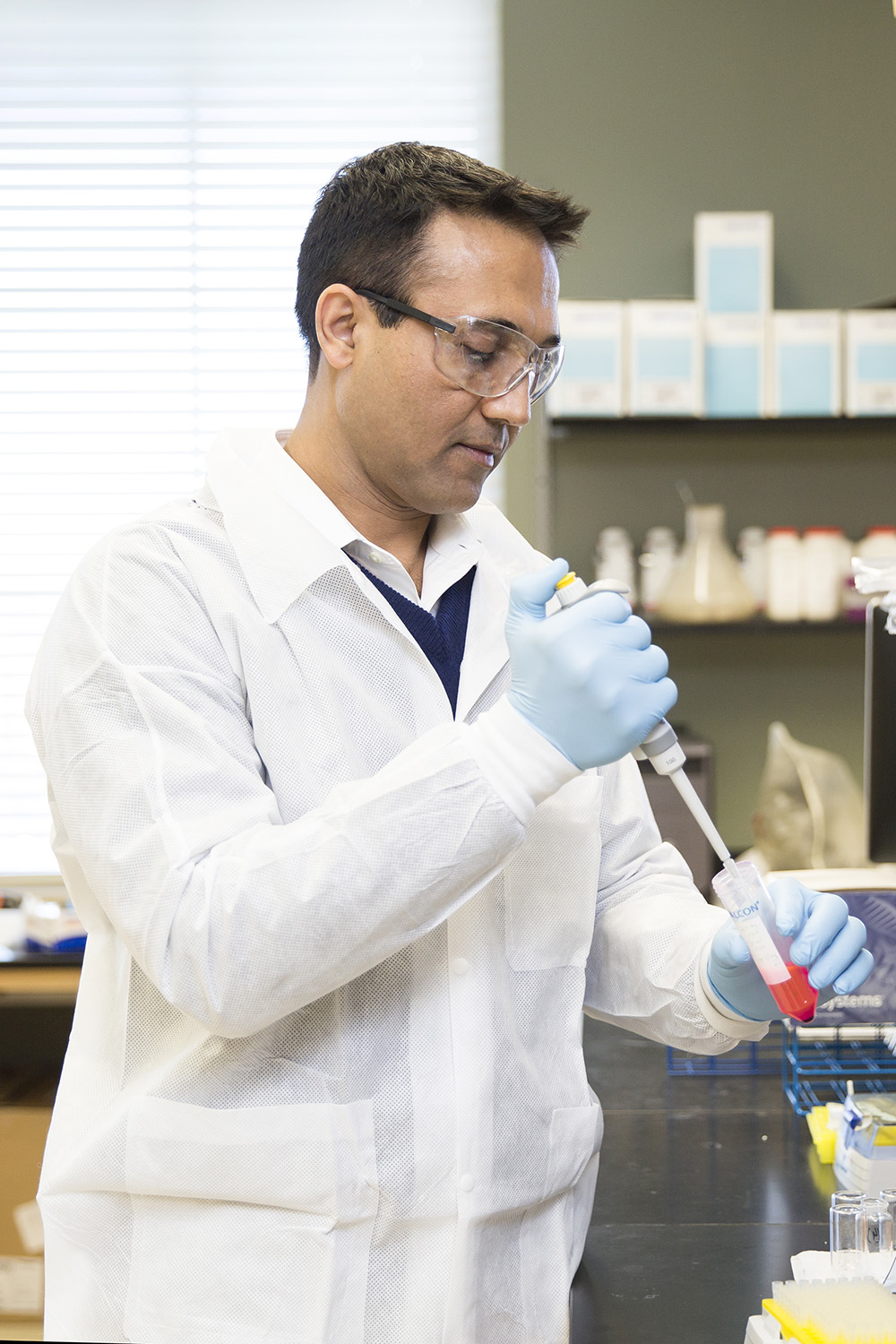Vaccine Could Protect Against Variety of Coronaviruses
By: Kaitlyn Hale
As researchers around the world focus on developing a vaccine for the SARS-CoV-2 virus that causes COVID-19, one Texas Tech professor is working on a vaccine that could protect not just against SARS-CoV-2, but a range of coronavirus strains.
Harvinder Gill, an associate professor and Whitacre Endowed Chair of Science and Engineering in the Whitacre College of Engineering, said his vaccine has been able to bind to six different strains of coronaviruses in laboratory tests, including the strain responsible for COVID-19.
“In the past there have been other coronaviruses that have affected or have caused infection in humans, so we are hoping it works against those strains and perhaps in future against other strains that might emerge,” Gill said. “It's a more broad vaccine against coronaviruses than what people are working on at the moment.”
How Vaccines Work
A person's immune system works by producing unique antibodies in response to a specific pathogen, but the process can take time. While the immune system works to build those antibodies and ultimately destroy the pathogen causing the disease, the person is at risk of becoming ill.

A vaccine introduces an inactive part of the pathogen that can't make a person sick but can trigger the immune system's production of antibodies. Once the body learns to build those specific antibodies, the immune system's response when the person is exposed again is much faster because the body already knows how to fight the disease.
Developing a Vaccine
To design a vaccine, Gill said, researchers rely upon what they already know about the structure of a virus and the functions of proteins on its surface to try to determine the best way to neutralize that virus's ability to infect.
Coronaviruses, like the flu, are RNA-based, but the proteins and their functions differ. In the case of the coronavirus, the spike protein helps the virus latch onto the cell it's trying to infect and subsequently facilitates entry of the virus into the cell. Gill said most researchers, including his lab, are targeting portions of the spike protein for their vaccines.
“It's not a hard and fast rule on how you can make a vaccine,” Gill said. “You just
have to look at the function of the virus proteins and pick the right one.”
Even with the urgent need for a vaccine, Gill said creating and testing a vaccine
safely takes time. The vaccine will need to go through a battery of tests, beginning
in a laboratory and ending with clinical trials, before a vaccine is available to
the public.
The time it takes to ensure the safety and efficacy of a vaccine is one of the reasons a broad coronavirus vaccine that can protect against many strains is important. It could mean protection against future emerging coronavirus strains as well as more common ones. Gill said that while the vaccine wouldn't eradicate the common cold, which is caused by a variety of viruses, it would protect against the coronavirus strains that cause similar symptoms.
The Research Must Go On
It is likely that a vaccine for SARS-CoV-2 will be available before Gill's research is complete, but that doesn't mean that his research, or other research into vaccines for this strain of coronavirus, won't contribute to the understanding of both vaccines and the virus.
Though the flu vaccine was developed in the 1940s, there is still no version of the vaccine that protects against all strains of the flu. Instead, the World Health Organization uses data collected throughout the year to predict what three or four strains are most likely to circulate during the upcoming season. Even with all that is known about the flu, the vaccines must be made months in advance. When the H1N1 flu pandemic hit in 2009, the seasonal flu vaccine didn't protect against that strain and the new vaccine wasn't widely available until after cases had already peaked, according to the Center for Disease Control.
“Vaccine research needs to be continued,” Gill said. “And we need to make sure we are on top of not just the vaccine development, but the viruses that are in circulation so that we are prepared to rise to the challenge and make vaccines ASAP.”
Ideally, Gill said, future researchers will know a virus well enough to develop a new vaccine within a month or so, but there is still a great amount of work ahead before reaching that point.
“Each virus has its own way of trying to invade the immune system, so it's really hard to make a vaccine,” he said. “I think the challenge is to continue to learn.”
Discoveries
-
Address
Texas Tech University, 2500 Broadway, Box 41075 Lubbock, TX 79409 -
Phone
806.742.3905 -
Email
vpr.communications@ttu.edu
